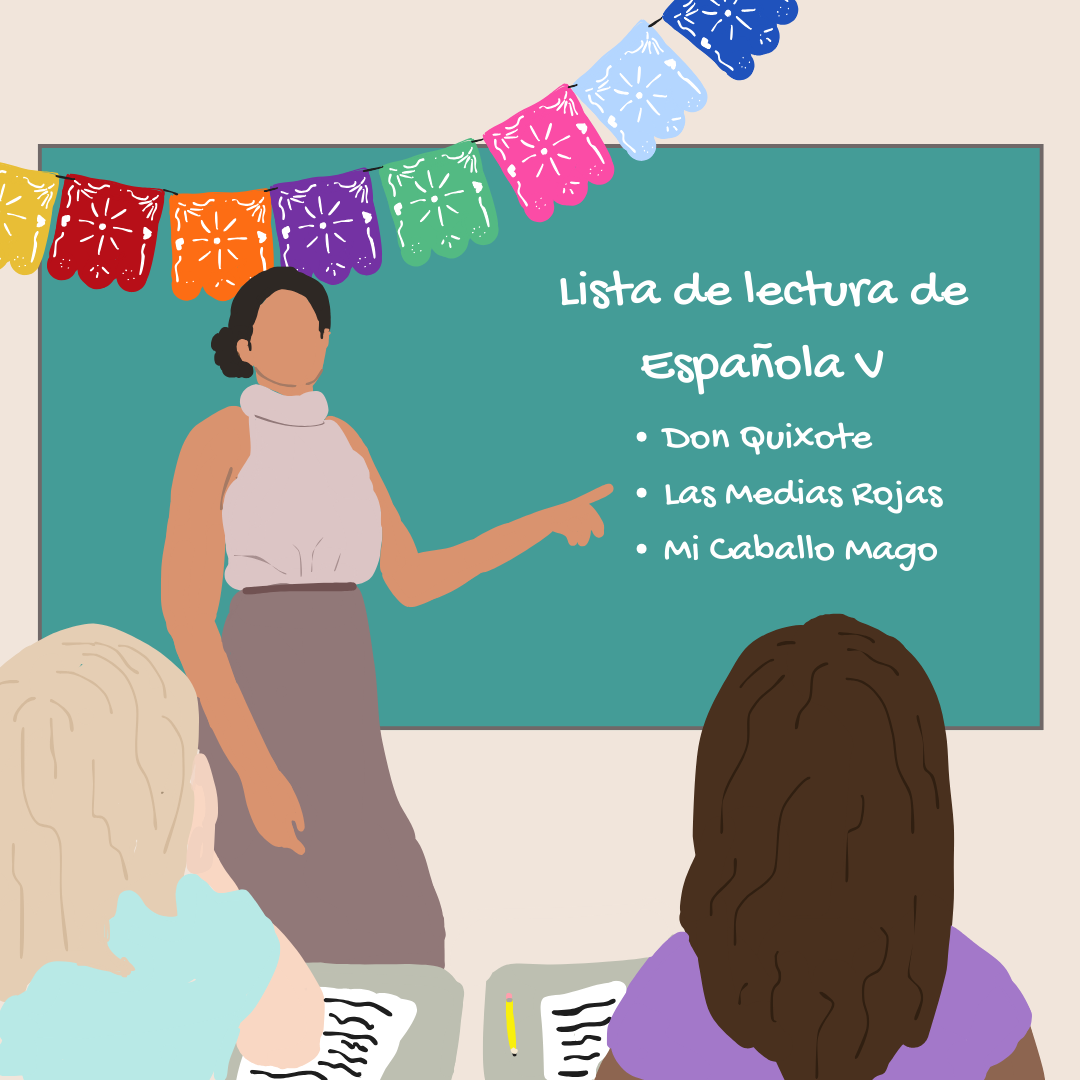Why are you here?
This is the question plastered on the board as the students enter class on the first day. One by one, the students share with the rest of the class. “Learning Spanish will allow me to study abroad!” one girl exclaims. “I think it’s cool to know multiple languages,” shares another. “I’m already fluent in speaking, but I’m not strong at writing.”
Each reason is distinct, yet they are all connected by a strong motivation to pursue Spanish far beyond graduation requirements.
AP (Advanced Placement) Spanish Literature and Composition, the highest level of Spanish offered, attracts a select group of students. With reasons ranging from a desire to improve reading ability, to the prospect of AP credit, to a passion for literature, 6th period in teacher Paige Stevenson’s class is the path students take to reach their Spanish learning goals.
“I really love literary analysis, history, and art movements,” senior Iglesias said. “A lot of the art movements intertwine with literary movements, so that is what made me interested in Spanish V. I’ve always loved Spanish and learning.”
AP Spanish Literature and Culture covers 38 texts from the Middle Ages up until the 20th century, including short stories such Las Medias Rojas, to full-length novels such as Don Quixote.
“Spanish V is largely a class about literature, specifically Spanish Literature, and how it all fits together,” Stevenson said. “It pulls everything [students] have learned about Spanish together, while tying in culture, so I think it’s a fun class to be able to explore.”
The class began with Mi Caballo Mago, a text from the 1960’s, written by Sabine Ulibarrí, and comparable to The Outsiders, a coming of age story intended for American teenagers. As of the end of August, the students began Visión de los Vencidos, a novel written by Miguel León-Portilla that examines the beliefs of indigenous people prior to the arrival of Hernán Cortés and other European colonizers.
“We recently read Mi Caballo Mago, which was a good introduction because it was more recently written and used modern vocab,” senior Jason Panoff said. “I liked it because it was short and had an easily understandable plot, but still used various literary devices that forced us to think.”
The class consists of only eight students, however, that number varies between five and 15 every year, making it much smaller than the typical 28 person class.
“I think the class size is fantastic because, when analyzing works of literature, it can be scary or a bit intimidating to share with a larger group,” Iglesias said. “I think having a smaller class size will work in our favor for having in-depth conversations and making sure that we all understand the work.”
The works students dissect throughout the year will become the focus of the Spanish Literature and Culture exam, which will take place on Friday, May 16.
“Our teacher warned us that it is very difficult to get a five on the test,” Iglesias said. “I think the test is very curved, so it is necessary to distinguish yourself in order to fall into the five portion of the curve.”
Not only do students earn college credit upon passing the AP exam, but completion of the course also demonstrates a high level of commitment to colleges, according to Stevenson.
“The course is kind of like a badge of honor, something that looks really good to colleges,” Stevenson said. “Colleges often check to make sure that students have completed the full amount of classes offered to the highest degree, so this is a great course for students who are looking to set themselves apart from their peers.”
Stevenson approximates that 50% of her students plan to pursue an education in Spanish beyond the high school level, with either a major or minor in the subject. Other students take the course to grasp a better understanding of what college level literature classes may look like.
“I would like to at least minor or do a semester abroad in college,” Iglesias said. “I can’t imagine giving up on Spanish at this point, because I’ve been studying it on my own since I was nine, but I didn’t make any progress until I started taking an actual class.”
For students such as sophomore Alonso Ardila, who had tested out of previous spanish classes, he chose to take Spanish V to further his fluency and make use of the GPA increase offered by AP courses.
“I took Spanish V because it would give me a really big boost to my GPA,” Ardila said. “I had also heard that Spanish V helps students improve writing, reading, and comprehension skills, because while I am fluent, I never learned how to read Spanish.”
For Panoff, his motives lie elsewhere, as he plans to pursue fluency in Spanish because he is attracted to the idea of bilingualism.
“I didn’t value Spanish very much my first and second year in the class,” Panoff said. “But about a quarter of the way through Spanish III, I realized ‘Oh wait, this is crazy, I can learn another language with these classes,’ so I started taking it super seriously and wanting to become better at it.”



